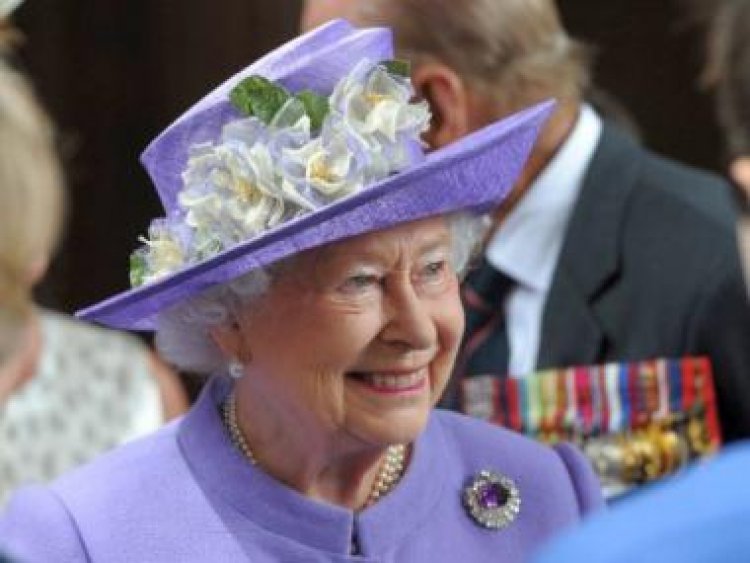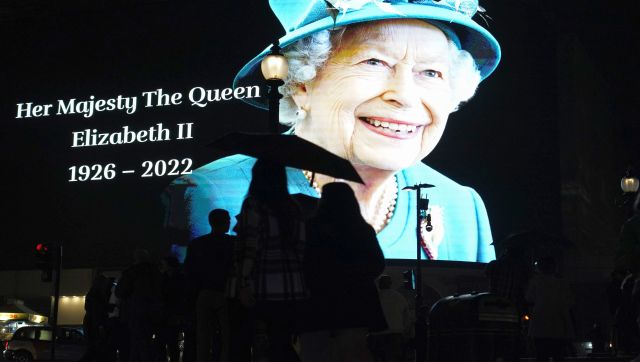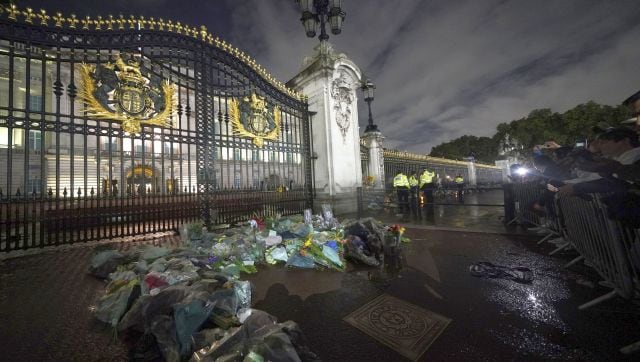Queen Elizabeth is dead: Here’s what happens for the next 10 days until her funeral
Queen Elizabeth is dead: Here’s what happens for the next 10 days until her funeral

After being on the throne for 70 years, the longest for a British monarch, Queen Elizabeth II passed away peacefully at the age of 96 at Balmoral in Scotland.
Sources were quoted as telling the Daily Mail that her eldest children, Prince Charles and Princess Anne, who were already in Scotland at the time of the Queen’s sudden turn for the worse, were able to make it in time to see her before her passing.
Her death sparked an immediate and huge outpouring of emotion, with thousands of heartbroken mourners gathering outside the gates of Buckingham Palace and other royal buildings.
With the demise of Queen Elizabeth, a number of detailed protocols have been put in place, including Operation Unicorn — the plan’s name if she died in Scotland.
We break down what’s expected next and how the funeral will take place for Queen Elizabeth II.
What is Operation Unicorn?
Most people are aware of Operation London Bridge, the formal plans drawn up to deal with the death of the head of state in England.
Operation Unicorn is the lesser-known version of the secret plan that outlines what happens following the Queen’s death in Scotland, rather than England. It was named Operation Unicorn as the unicorn is the national animal of Scotland and forms part of the royal coat of arms, along with the lion of England.
Operation Unicorn was first referred to in the Parliament’s online papers in back 2017, when it was agreed to set up a “resilience board for disruptive incidents”.
Unicorn lays out how the Queen’s body will be taken from Balmoral to London.
A number of other plans also existed, including Operation Overstudy, which would have been used if the Queen died while overseas.
What does Operation Unicorn involve?
Operation Unicorn is a meticulous plan which has been created and regularly revised to ensure swift and organised procedures when the Queen dies in Scotland.
As the Queen passed away at Balmoral — her summer home where she was happiest — the Scottish Parliament will be immediately suspended and authorities will be given 36 hours to prepare a motion of condolence in the chamber.
Today, the Queen’s coffin will be moved to the ballroom at Balmoral Castle in Scotland, covered in the royal standard of Scotland and a wreath of flowers that is changed daily. The many staff members who at Balmoral and its vast estate will be able to pay their respects.
From Balmoral, the Queen’s body is expected to taken by train from Aberdeen to Edinburgh, and will lie at rest at the Palace of Holyroodhouse, her official Scottish residence.
According to The Guardian, her coffin will be carried up the Royal Mile to St Giles’s cathedral for a service of reception, where Scotland’s civic leaders, dignitaries and members of the public will have the opportunity to pay their respects and sign a book of condolence.
Her body will then be placed on the Royal Train at Waverley station which will travel down the east coast mainline to London for the burial service. There are plans for an honour guard on every platform from Edinburgh southward, ultimately returning to the Throne Room at Buckingham Palace.
It is expected that members of the public will line up to throw flowers at the Royal Train at level crossings and on station platforms situated along the length of the country including Musselburgh, Thirsk, Peterborough and Hatfield.
Another train will follow behind the royal Train in order to clear debris from the tracks.

Operation London Bridge commences
Once the Queen crosses the Scottish border, Operation Unicorn ends and Operation London Bridge commences.
The state funeral will be held on the 10th day of her death at Westminster Abbey — 19 September.
A long list of protocols will come into place as the country is plunged into a period of official mourning.
While today will be referred to as D-Day, the days to come will be known as D-Day plus the number of days that have passed since her death. The first steps of D-Day are already underway, with flags lowered to half-mast as a sign of respect.
According to The Mirror, Charles and Camilla will return to London today and Charles will have an audience as monarch with Prime Minister Liz Truss as soon as practically possible. He will also will meet the Earl Marshal – the Duke of Norfolk – who is in charge of the accession and the Queen’s funeral, to approve the carefully choreographed schedule for the coming days.
The King will decide on the length royal mourning for members of the royal family and royal households. It is expected to last a month. The Government will confirm the length of national mourning, which is likely to be around 12 to 13 days, from now up to the day after the Queen’s funeral.

Bells will toll at Westminster Abbey, St Paul’s Cathedral and Windsor Castle, and gun salutes — one round for every year of the Queen’s life — will be fired in Hyde Park and at other stations.
The Sebastopol bell, captured from Russian forces during the 19th-century Crimean War, will also sound at Windsor Castle once a minute for every year of her life.
The King will make a televised address to the nation, which he is due to pre-record. He will pay tribute to the Queen and pledge his duty to his service as the new sovereign.
Once the Queen’s body arrives in London, it will be first taken to Buckingham Palace. From there, on 14 September (D-Day +5) the Queen’s coffin will be taken in a ceremonial procession from Buckingham Palace to the Houses of Parliament, where a service will take place at Westminster Hall.
The Archbishop of Canterbury will conduct a short service following the coffin’s arrival.
Hundreds of thousands of people will file past the coffin on its catafalque and pay their respects, just as they did for the Queen Mother’s lying in state in 2002.
From then onwards for three days, members of the public will be allowed to view the Queen’s coffin, which will lie on a catafalque in the centre of Westminster Hall. Dignitaries will be issued with tickets giving them a time slot.
The Queen’s funeral
On D-Day +10, the Queen’s funeral is expected take place at Westminster Abbey in central London.
The Queen’s funeral will see thousands turn up and heads of state, prime ministers and presidents, European royals and key figures from public life will be invited to gather in the abbey.
The Last Post, Reveille and the national anthem will end the hour-long funeral service, before a procession that could be as long as 1.5 miles then carries the coffin past Buckingham Palace to Wellington Arch and on to Elizabeth’s final resting place at Windsor.
It has been said that the Queen’s final resting place will be the King George VI memorial chapel, an annex to the main chapel – where her mother and father were buried, along with the ashes of her sister, Princess Margaret.
Philip’s coffin will move from the Royal Vault to the memorial chapel to join the Queen’s.
With inputs from agencies
Read all the Latest News, Trending News, Cricket News, Bollywood News,
India News and Entertainment News here. Follow us on Facebook, Twitter and Instagram.
What's Your Reaction?



























































